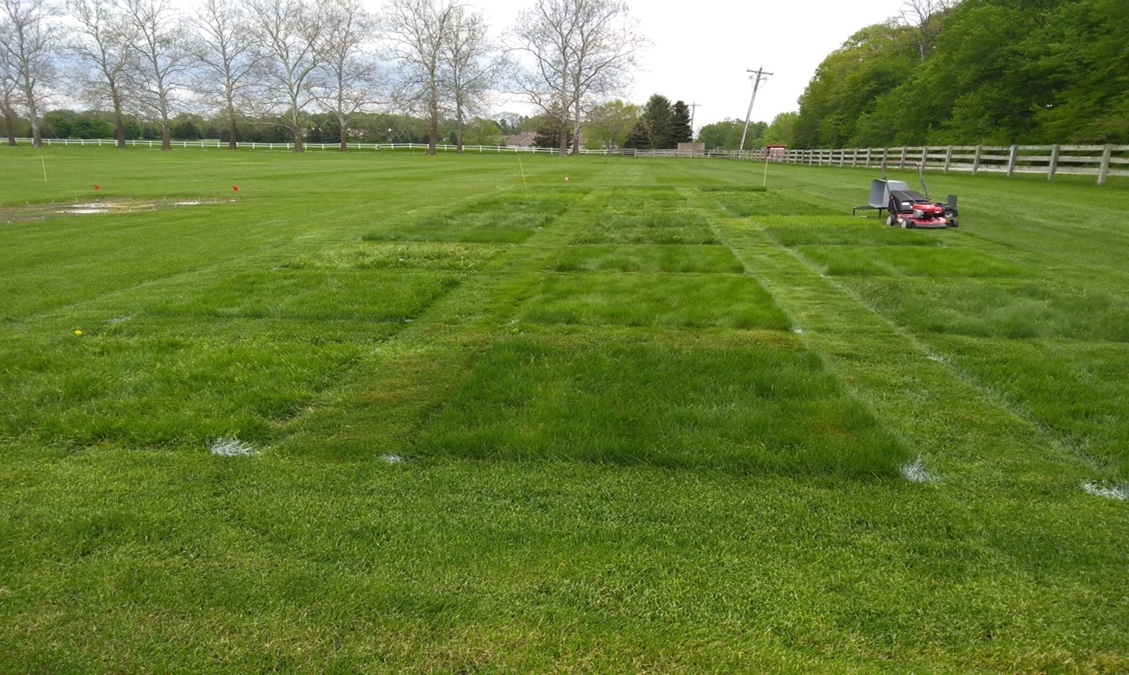Managers explained that lack of success in the establishment of earlier varieties led to the perception that fine fescues have a lot of challenges. They consistently expressed difficulty establishing fine fescues with the standard establishment procedures.
- Ready now: Seed mixtures can be used that help during the establishment of stands of fine fescues; most commonly, fine fescues are mixed with perennial ryegrass to help the slower establishing fine fescues compete later on. Other nurse grasses can be used in aiding the establishment of fine fescue.
- Information ready within the year: A variety of establishment procedures exist, some examples can be found at the links below; however, more comprehensive and step-by-step procedures should be compiled into a single document for individuals to follow. The team will be working on producing such a guide that will be freely available in the future.
- Longer-term: First, research on improved varieties is needed to identify establishment practices and specific genes in fine fescues that help the grasses germinate and establish more quickly. Second, new varieties need to be advantageous for seed production and commercially available.
What are fine fescues? Some managers expressed extreme confusion with the plethora of fine fescue names, and many don’t go any further due to not being able to pick out specific varieties that have available information.
- Ready now: There are guides available on a broad level to help identify and understand the differences between the species of fine fescue.
- Inforation ready within 1-2 years: Species of fine fescues do indeed have different attributes which may or may not be suitable for a particular location or use case. The team will be working on an easy to use resource information source for choosing a fine fescue variety that would be suitable for a specific location, including an app that can show commercially available varieties.
- Long-term goal: Confusion in the naming and identification of fine fescues starts with the fact that there are a large number of species, subspecies, and varieties of fine fescues that aren’t well sorted out on the biological level. Future work will need to address this to make clearer distinctions at the different levels of identification.
Some public land managers had poor experiences with past varieties of fine fescues and are less willing to use current fine fescues without evidence based on their own hands-on experience with new varieties as well as evidence from research station experiments.
- Ready now: Demonstration plots on 6 campuses showcase the utility of fine fescues as low-input turf options.
- For a list of locations see: Demo Plot Location List – Demo Plot Google Map
- Information ready within 1 year: Perhaps one of the reasons behind these perceptions is due to the use of substantially older varieties. There are dozens of new fine fescue varieties with considerably better performance that have been introduced in recent years. The team will be working on extension documents, working with distributors, and marketing efforts to update individuals on the current varieties of fine fescue available for use. Below is a short list of newer varieties and is not comprehensive.
- Mid-term goal, 1-2 years: An increased number of manager specific field days happen in the next two years for individuals to get first-hand experiences with new varieties of fine fescues and see how they can perform in different circumstances.
- Mid-term goal, 2-3 years: The team is working on ideas for increasing the volume of on-site trials so managers can test out fine fescues on their land in local conditions. The team will provide initial seed as well as the support of extension staff to help in establishment and maintenance guidance post-establishment.
Managers said any shift to fine fescues requires a comparative cost-analysis across site-specific turfgrass options to convince them and then convince their bosses.
- Mid-term goal, 1-2 years: The team already has several on-going studies and studies starting soon that will help in quantifying such costs related to fertilizer and water use as well as mowing requirements for fine fescue.
- Long-term goal: A comprehensive cost analysis needs to be undertaken covering the following areas: a) cost of seed/establishment, b) maintenance costs, and c) increased value of improved turf in hard to maintain areas. All of these need to be conducted and presented in comparison to other turfgrass varieties or existing varieties and practices on-site.
